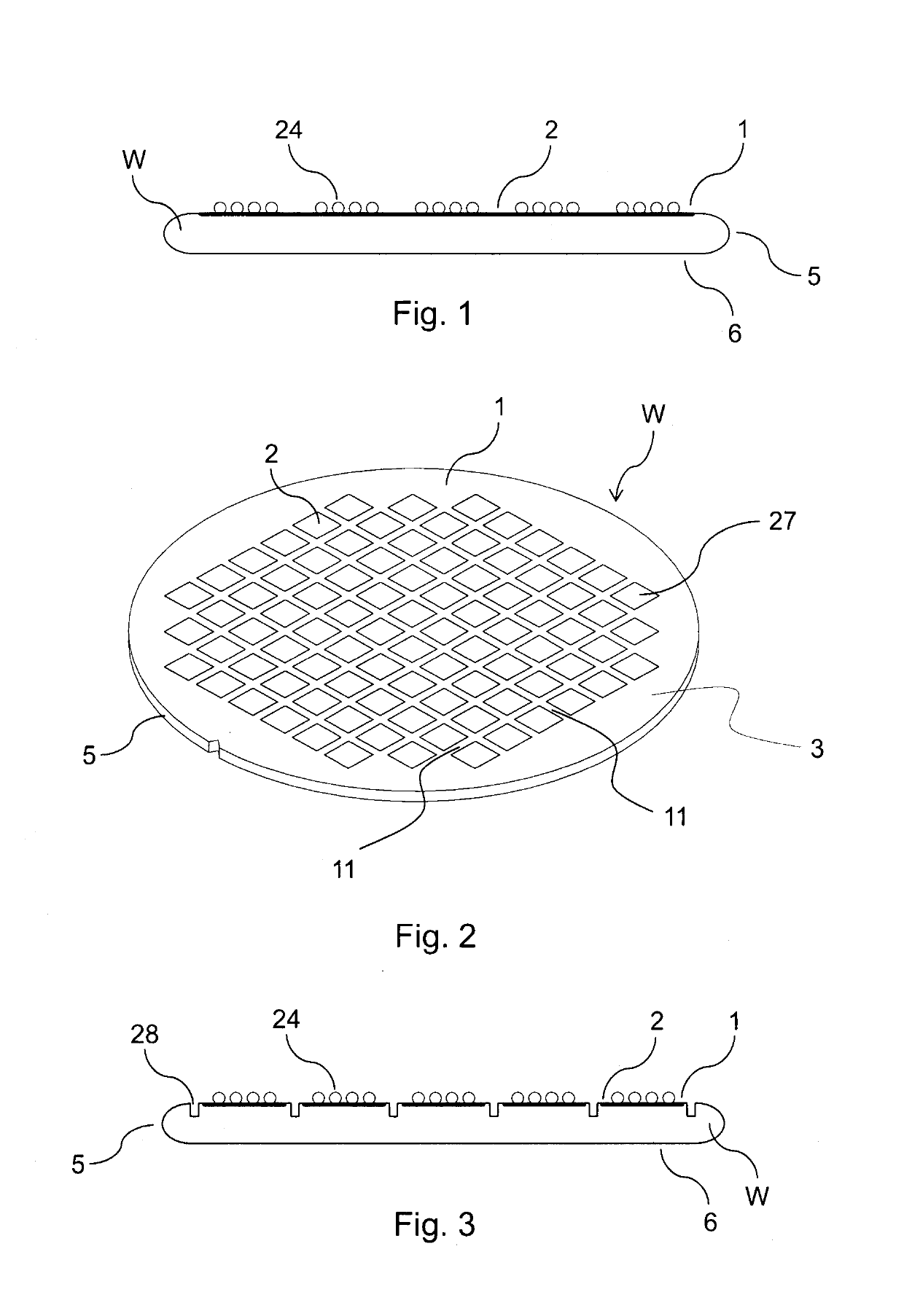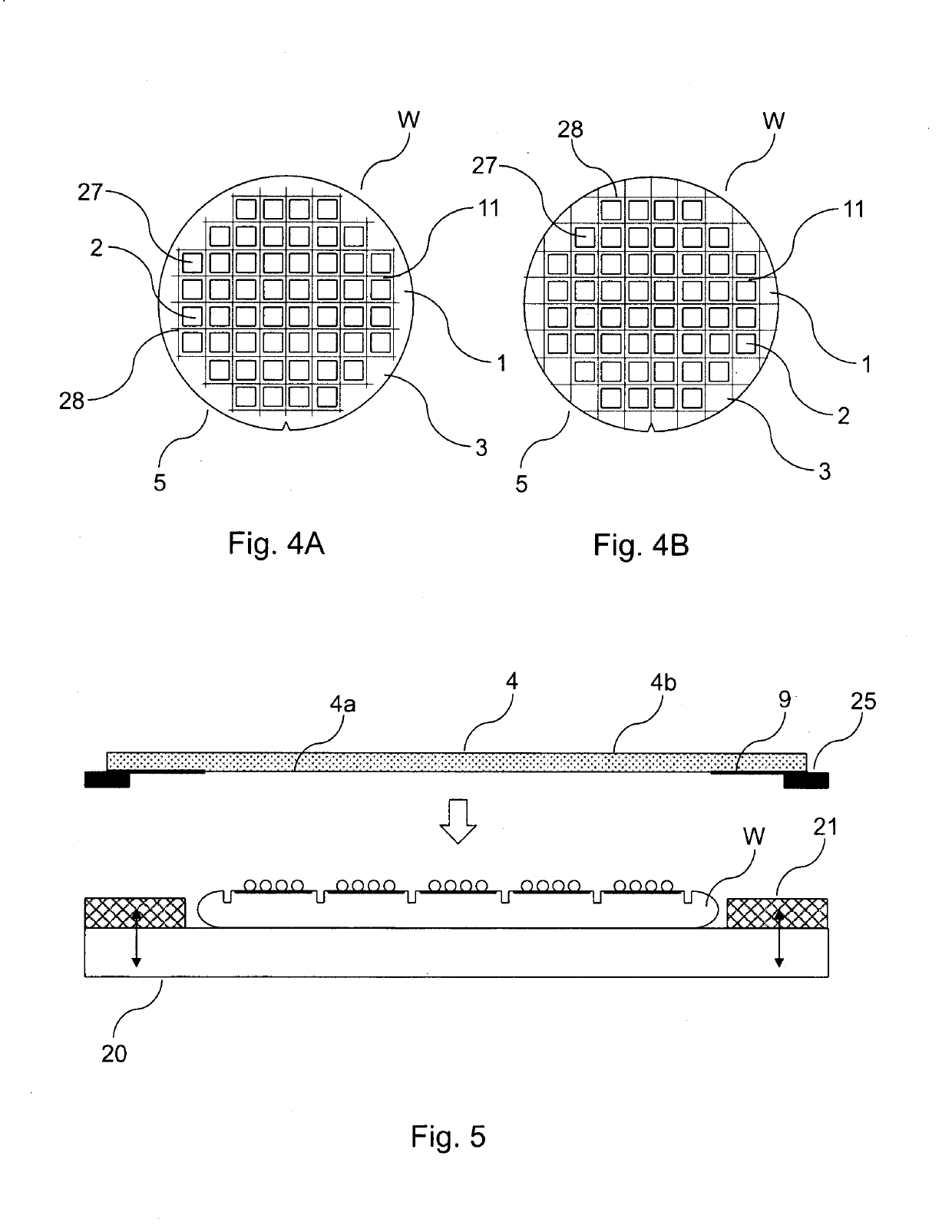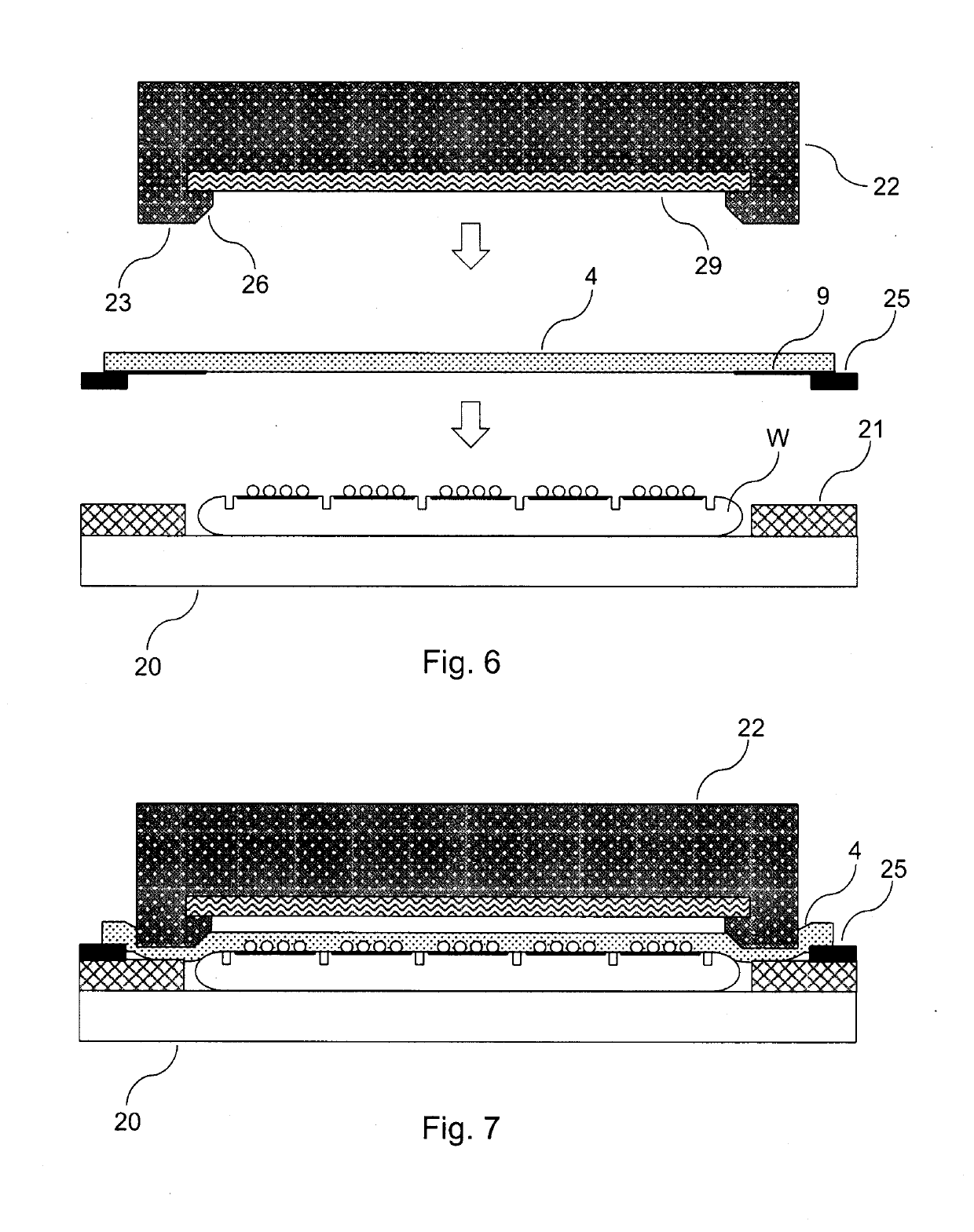Method of processing a wafer
a technology of processing method and wafer, which is applied in the direction of manufacturing tools, soldering devices, and auxillary welding devices, etc., can solve the problems of uneven front side of the wafer, ineffective protection of the surface, and uneven surface profile, so as to reduce the thickness of the wafer, and protect the surface from damage. , the effect of compromising the quality of the resultant chips or dies
- Summary
- Abstract
- Description
- Claims
- Application Information
AI Technical Summary
Benefits of technology
Problems solved by technology
Method used
Image
Examples
first embodiment
[0198]In the following, a method of processing a wafer W according to the present invention will be described with reference to FIGS. 1 to 10B.
[0199]FIG. 1 shows a cross-sectional view of the wafer W to be processed by the method of the present invention. FIG. 2 shows a perspective view of the wafer W shown in cross-section in FIG. 1.
[0200]In the method of this embodiment, as a first step, wafer material is removed along the division lines 11 (see FIGS. 4A and 4B) from the front side 1 of the wafer W. In this process, wafer material is removed along only a part of the thickness of the wafer W so as to form grooves 28 extending along the division lines 11, as is shown in FIGS. 3, 4A and 4B.
[0201]The wafer material may be removed along the division lines 11 in the manner detailed above. In particular, the wafer material may be mechanically removed along the division lines 11. For example, the wafer material may be removed along the division lines 11 by mechanically cutting the wafer W...
second embodiment
[0255]In the following, a method of processing the wafer W according to the present invention will be described with reference to FIGS. 11 and 12.
[0256]In the description of the second embodiment, the elements which are similar or identical to those of the first embodiment are denoted by the same reference signs and a repeated detailed description thereof is omitted.
[0257]The wafer processing method according to the second embodiment substantially only differs from the wafer processing method according to the first embodiment in that the annular frame 25 is omitted (see FIGS. 11 and 12). Further, in the second embodiment, the outer diameter of the protective film 4 is smaller than in the first embodiment.
[0258]In particular, the outer diameter of the protective film 4 of the second embodiment is smaller than the outer diameter of the pressing stamp 22. However, also the outer diameter of the protective film 4 of the second embodiment is larger than the outer diameter of the wafer W,...
PUM
| Property | Measurement | Unit |
|---|---|---|
| thicknesses | aaaaa | aaaaa |
| temperature | aaaaa | aaaaa |
| temperature | aaaaa | aaaaa |
Abstract
Description
Claims
Application Information
 Login to View More
Login to View More - R&D
- Intellectual Property
- Life Sciences
- Materials
- Tech Scout
- Unparalleled Data Quality
- Higher Quality Content
- 60% Fewer Hallucinations
Browse by: Latest US Patents, China's latest patents, Technical Efficacy Thesaurus, Application Domain, Technology Topic, Popular Technical Reports.
© 2025 PatSnap. All rights reserved.Legal|Privacy policy|Modern Slavery Act Transparency Statement|Sitemap|About US| Contact US: help@patsnap.com



